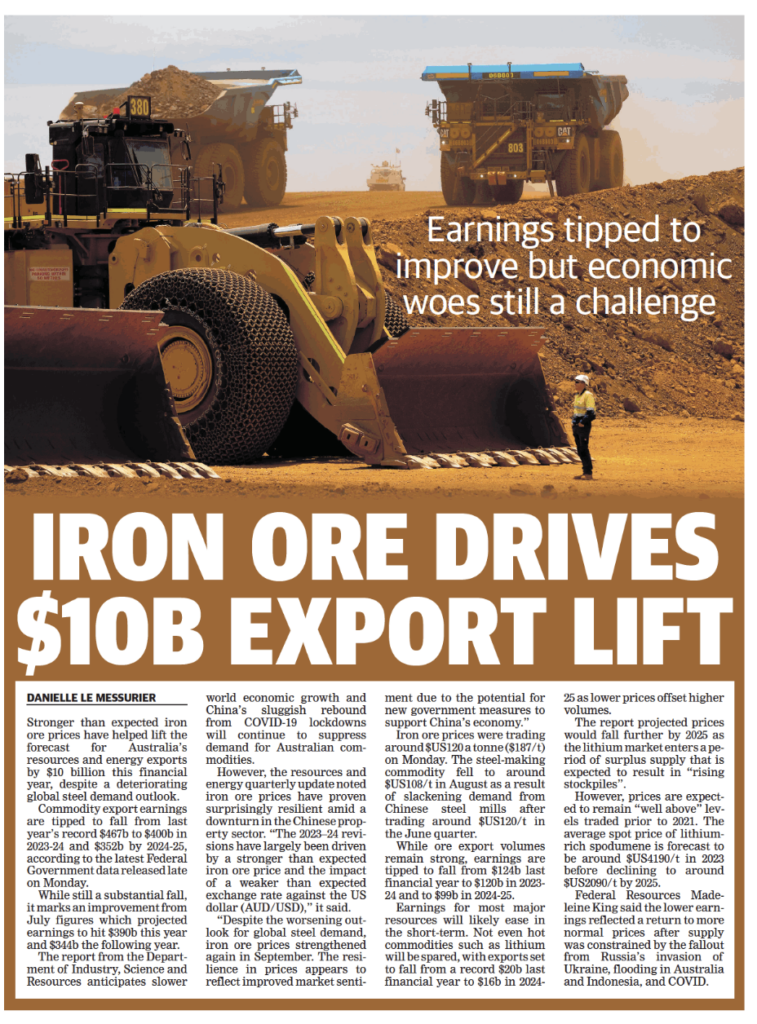
Article by Danielle Le Messurier courtesy of the West Australian.

Earnings tipped to improve but economic woes still a challenge.
Stronger than expected iron ore prices have helped lift the forecast for Australia’s resources and energy exports by $10 billion this financial year, despite a deteriorating global steel demand outlook.
Commodity export earnings are tipped to fall from last year’s record $467b to $400b in 2023-24 and $352b by 2024-25, according to the latest Federal Government data released late on Monday.
While still a substantial fall, it marks an improvement from July figures which projected earnings to hit $390b this year and $344b the following year.
The report from the Department of Industry, Science and Resources anticipates slower world economic growth and China’s sluggish rebound from COVID-19 lockdowns will continue to suppress demand for Australian commodities.
However, the resources and energy quarterly update noted iron ore prices have proven surprisingly resilient amid a downturn in the Chinese property sector. “The 2023–24 revisions have largely been driven by a stronger than expected iron ore price and the impact of a weaker than expected exchange rate against the US dollar (AUD/USD),” it said.
“Despite the worsening outlook for global steel demand, iron ore prices strengthened again in September. The resilience in prices appears to reflect improved market sentiment due to the potential for new government measures to support China’s economy.”
Iron ore prices were trading around $US120 a tonne ($187/t) on Monday. The steel-making commodity fell to around $US108/t in August as a result of slackening demand from Chinese steel mills after trading around $US120/t in the June quarter.
While ore export volumes remain strong, earnings are tipped to fall from $124b last financial year to $120b in 2023-24 and to $99b in 2024-25.
Earnings for most major resources will likely ease in the short-term. Not even hot commodities such as lithium will be spared, with exports set to fall from a record $20b last financial year to $16b in 2024-25 as lower prices offset higher volumes.
The report projected prices would fall further by 2025 as the lithium market enters a period of surplus supply that is expected to result in “rising stockpiles”.
However, prices are expected to remain “well above” levels traded prior to 2021. The average spot price of lithiumrich spodumene is forecast to be around $US4190/t in 2023 before declining to around $US2090/t by 2025.
Federal Resources Madeleine King said the lower earnings reflected a return to more normal prices after supply was constrained by the fallout from Russia’s invasion of Ukraine, flooding in Australia and Indonesia, and COVID.